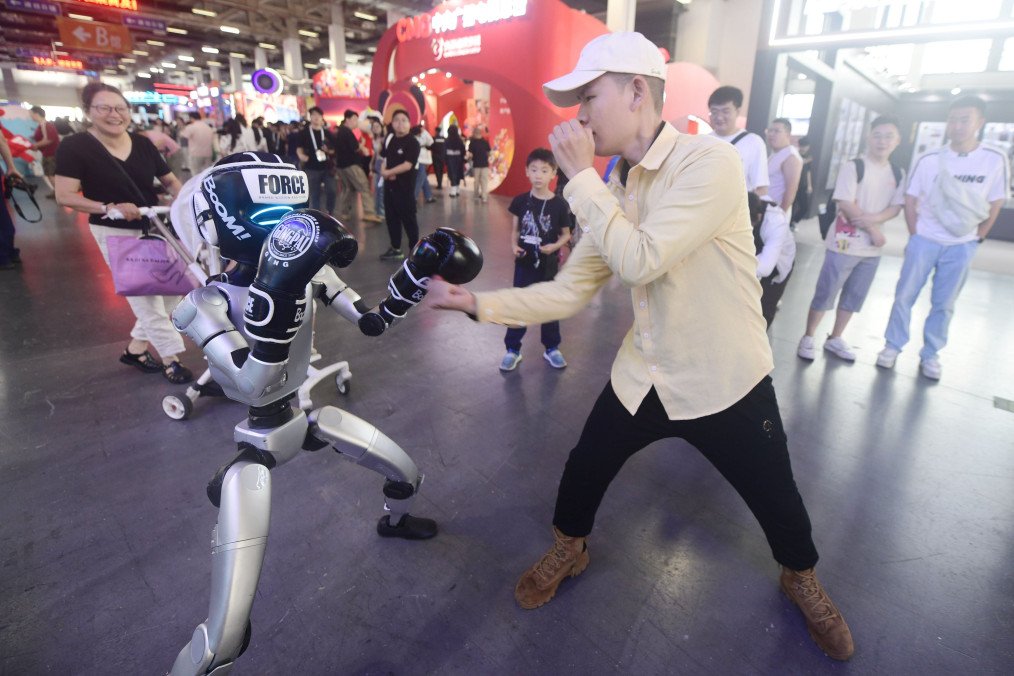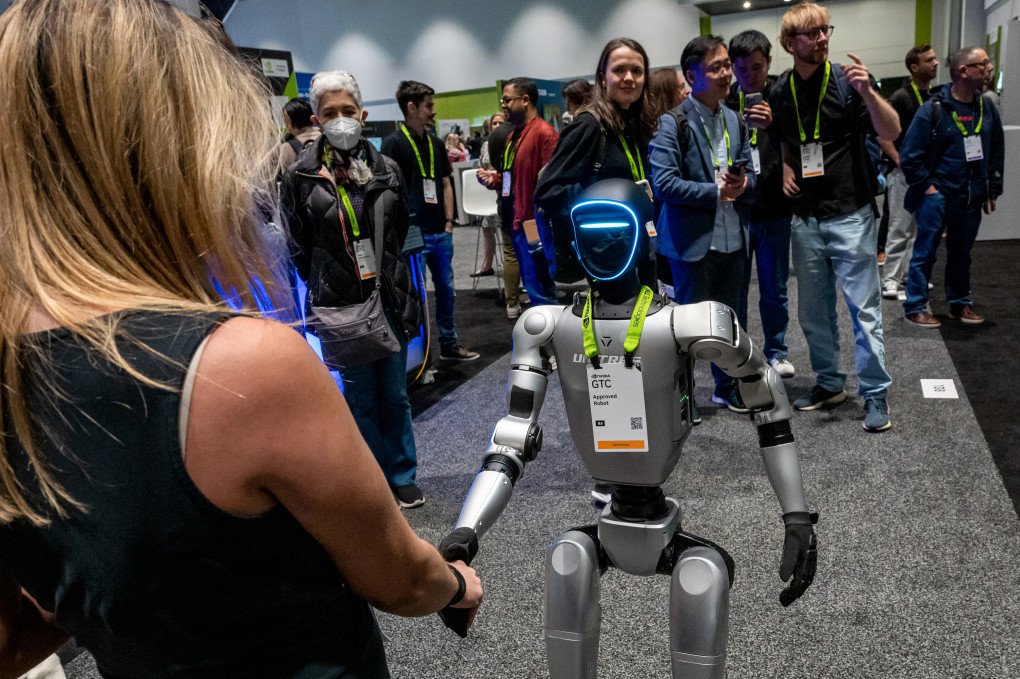- Category
- Latest news
Russia Unveils “Domestic” Robot That’s Actually Made in China and Rents for $780 an Hour

At the 2025 St. Petersburg International Economic Forum (SPIEF), a humanoid robot showcased by Russian software firm Red Soft drew attention for its interactive features—shaking hands, carrying items, and even strolling the forum grounds with a Dior bag, with official Russian media hailing it as a homegrown innovation.
There’s just one problem: it wasn’t Russian, according to a Russian media outlet, Ne TV, on June 19.
The robot, presented under names like “Volodya” and “Robert,” is a Chinese-made Unitree G1, developed by Unitree Robotics.
The same robot is reportedly available for rental in China for around 70,000 rubles ($780) per hour, or can be purchased for approximately 2.7 million rubles ($30,000).
Despite the branding, the humanoid robot is not an original Russian creation but rather a pre-manufactured platform being used to test locally developed software. Red Soft confirmed that the robot is a “prototype” and a “first sample,” serving as a testbed for proprietary Russian programs designed for robotics systems.
В России на ПМЭФ показали робота карлика по имени Володя. pic.twitter.com/vDfkcoJdU3
— Ihor Sauss (V) ™ (@Victor61139501) June 18, 2025
“It’s a prototype. We are testing Russian software created specifically for this class of machine,” Red Soft representatives explained.
Still, the outer shell and mechanical platform are undeniably Chinese.
The Unitree G1 stands 127 cm tall, weighs 35 kg, and is capable of carrying loads up to 2 kg. It has 23 degrees of freedom, an onboard AI system, and panoramic vision. The robot runs on a battery for up to two hours before needing a recharge.

According to Hi-Tech Mail, Chinese representatives involved in assembling “Volodya” and “Robert” confirmed that the units were built in China, but added that there are plans to start producing the robots in Russia.
Earlier, reports emerged that China’s development of a containerized missile system resembling Russia’s Club-K has drawn renewed attention from military analysts, with growing concerns over its potential use in a future Pacific conflict.
The Chinese version, known in the West as CSDCS, was first presented at the 2022 Zhuhai Airshow and is seen as a more advanced system than the Russian original.



-72b63a4e0c8c475ad81fe3eed3f63729.jpeg)


